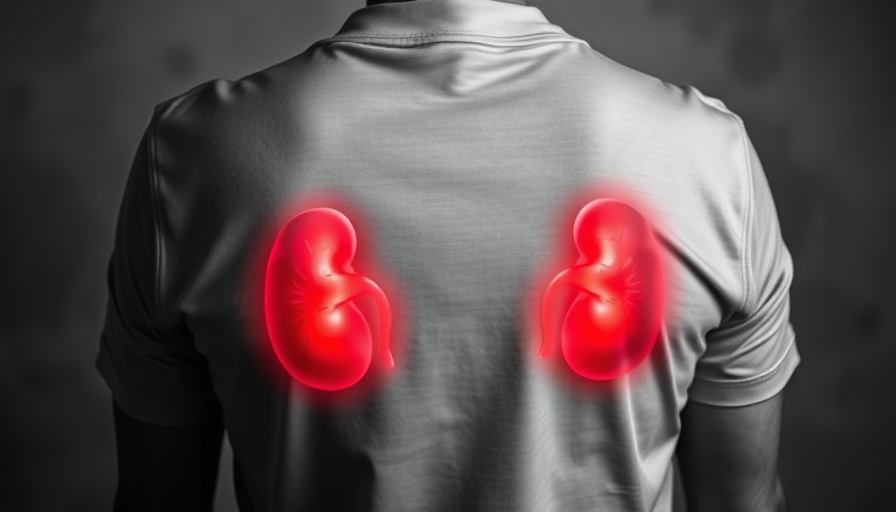
Understanding Waist-to-Height Ratio and Its Importance
The waist-to-height ratio (WHtR) is a key indicator used to assess central obesity and its implications for children’s health. Unlike the traditional body mass index (BMI), which may not accurately reflect individual health due to differences in body composition, WHtR provides a clearer picture of how fat is distributed in the body. Research has shown that children exhibiting higher WHtR trajectories are more likely to face increased risks of cardiometabolic diseases and cardiovascular issues at a tender age.
The Rising Concern of Childhood Obesity
Childhood obesity has reached alarming levels globally, and its associated health risks cannot be overlooked. As indicated in findings presented by Dr. David Horner, a pediatric obesity expert from Herlev and Gentofte Hospital, monitoring central obesity through WHtR can alert healthcare providers to potential risks much earlier. In his study based on the extensive COPSAC2010 cohort, a compelling link was established between increased WHtR and markers of heart health, such as elevated blood pressure and abnormal lipid levels.
How WHtR Can Influence Insights into Health Risk
This study, which assess children from birth to 10 years, found three trajectories of WHtR. Notably, the slow-rising group—15% of participants—showed elevated cardiometabolic risk scores. This data underscores the necessity of early interventions in children's dietary and lifestyle choices to prevent the progression of obesity and associated health problems.
Real-life Implications of High WHtR in Children
Presenting relatable scenarios about how children with rising WHtR may face challenges can powerfully illustrate the point. For instance, consider a child frequently experiencing fatigue and irritability. Their increasing waist measurement might indicate a hidden issue. This portrayal not only highlights the medical implications but also prompts parents to reflect on how health monitoring can play a crucial role in enhancing their children's well-being.
The Role of Parents and Caregivers
Empowerment plays a pivotal role here. Parents and caregivers have a unique position to influence their children’s health trajectories. Encouraging active play, balanced nutrition, and regular health check-ups can aid in managing WHtR effectively. A family that eats balanced meals together and engages in physical activities not only nurtures a healthier lifestyle but also fosters emotional bonds and reduces the stress that often accompanies discussions about weight.
Future Trends: Expectations in Childhood Health Monitoring
Looking ahead, the integration of WHtR assessments into routine pediatric care offers promising feedback for overall health management. As more research surfaces, healthcare professionals are expected to utilize WHtR more frequently, fostering a culture of preemptive health measures in pediatric care.
Encouraging Conversations About Health
This information is vital in combatting misconceptions about childhood obesity. Many tend to underestimate the severe health risks, thinking of excess weight merely as a cosmetic issue rather than a precursor to significant health concerns. Armed with knowledge about WHtR, parents can create more informed and supportive environments that prioritize health over appearance.
Taking Action: Steps Parents Can Take
So, what can concerned parents do? First, they can consult pediatricians for guidance on monitoring their child’s WHtR alongside regular check-ups. Second, creating a home environment that promotes physical activity and healthy eating will be essential. Short walks, bike rides, or even fun family danceoffs can make a significant difference! Third, engaging children in decision-making about their meals can foster a sense of ownership over their health.
As communities work together to support families in prioritizing their health, inspiring stories of successful lifestyle changes can emerge. Whether it’s a neighborhood gardening project or school programs teaching children about nutrition, collective efforts can build a healthier future.
In conclusion, tracking waist-to-height ratios is a meaningful practice for parents and caregivers who wish to encourage their children toward a healthier lifestyle. Understanding the implications of central obesity can lead to proactive measures that pave the way for a healthier tomorrow.
As you consider your child's health, remember: early intervention counts!
 Add Row
Add Row  Add
Add 



 Add Row
Add Row  Add
Add 
Write A Comment